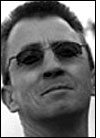Oct 13, 2003When it comes to selling their products in Europe, radio frequency identification hardware vendors are shifting their attention away from the retail sector, according to a study conducted by systems integrators LogicaCMG. In the United States, however, interest remains concentrated on the retail and defense sectors.
Hardware vendors are responding to stronger interest for UHF RFID from European companies in a range of industries. "This move has been made over the past six to 12 months across all the vendors, and for two reasons—one negative, one positive. [Adoption of RFID in] retail has not developed as quickly as vendors had hoped, but because of the changes to European regulations, as well as the Gen 2, other markets are starting to see the potential of UHF," says Paul Stam de Jonge, group director of RFID solutions at LogicaCMG.
Those other markets include transportation and logistics, automotive, aerospace and health care, says the report.
The study started in February with a survey of RFID hardware vendors. Twenty manufacturers, selected because of their ability to provide UHF RFID chips, tags, interrogators (readers) or printer-encoders for use in Europe, responded to a questionnaire. During the summer, LogicaCMG carried out qualitative in-depth interviews with end users, hardware vendors and industry bodies.
The study found that uptake of RFID in Europe will be boosted by the adoption of regulations recently developed by the European Telecommunications Standards Institute (ETSI). Agreed upon by national communications authorities across Europe in September of last year, the new regulations, dubbed ETSI 302-208, enable UHF equipment in Europe to perform comparably with similar equipment in North America. Another factor spurring European interest in RFID was the ratification in December of the EPC Gen 2 standard for tags and readers. As a result of the new standard and regulations, more than two-thirds of hardware vendors say they now create RFID technology that works in both the United States and Europe, according to LogicaCMG.
Although hardware vendors expect to sell their products to European companies from a range of industries, LogicaCMG does not expect the increased sales to lead to lower prices in Europe—at least, not in the near term. "Hardware vendors don't anticipate major price reductions in the next 12 months in Europe, as they are focused on enhancing functionality with the new European regulations and Gen 2 in readers and tags," says Eelco de Jong, RFID domain lead at LogicaCMG. Over the next three to five years, however, the firm expects that greater sales volumes of tags and readers will lead to price cuts by 60 to 70 percent, with readers available for fewer than 1,000 euros.
LogicaCMG says it carried out the hardware vendor study as a way to help its customers determine if UHF RFID was ready for adoption in Europe. For many business applications, according to the survey, the answer is yes. RFID deployments, the company advises, should be focused on areas where the technology can be used to optimize performance in a specific situation, such as tracking forklift trucks in a warehouse or baggage in the aviation industry.
According to the systems integrator, there is no dominant hardware vendor for UHF technology in Europe, and end users have to deal with a relatively immature market with no off-the-shelf offerings that bundle together hardware and software. The study, the company reports, found that UHF hardware vendors agreed that system integrators, such as LogicaCMG, are the natural choice to help develop integrated solutions for companies deploying UHF RFID. The full report, entitled RFID Hardware Survey 2005, can be downloaded for free from LogicaCMG's Web site.


